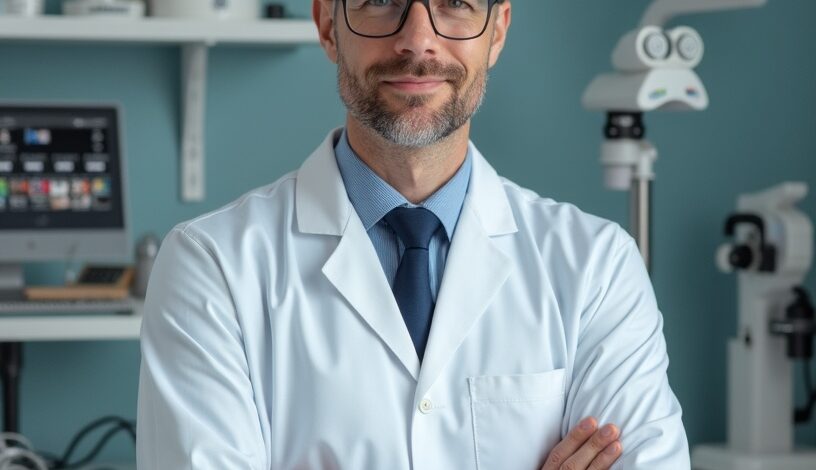Have you ever wondered what happens when you visit an eye doctor? Most people think they just check if you need glasses, but eye doctors have way more tools and tricks up their sleeves than you might expect. They’re like detectives for your eyes, figuring out problems you didn’t even know existed and fixing them with some pretty amazing methods.
What Eye Doctors Really Do
Eye doctors don’t just make you read those tiny letters on the wall chart. They spend years learning about every single part of your eye and how it works with your brain to help you see. Think of your eyes like a camera – there are lots of different parts that all need to work together perfectly to take a clear picture.
When kids come to see an eye doctor, sometimes they discover that one eye isn’t working as hard as the other. This is actually way more common than people realize. The stronger eye starts doing most of the work, while the weaker one gets lazy. Doctors have developed some really smart ways to fix this problem, and one of their most effective tools might surprise you.
The Power of Covering Up
One of the most successful treatments eye doctors use is something called patching therapy. It sounds simple, but it’s actually based on really smart science. When doctors recommend medical eye patches for children with vision problems, they’re using a method that forces the weaker eye to work harder and get stronger.
Here’s how it works: by covering the stronger eye for certain periods each day, the brain has no choice but to rely on the weaker eye. It’s kind of like if you always used your right hand for everything, your left hand would stay weak. But if you put your right hand behind your back for a while each day, your left hand would have to do the work and would get stronger.
The patches themselves have come a long way from what people might remember from old pirate movies. Modern patches are comfortable, come in fun colors and designs, and are specifically made for medical use. Some even have special adhesives that are gentle on kids’ skin but stay put during active play.
When Eyes Don’t Team Up
Sometimes both eyes work fine on their own, but they don’t know how to work together as a team. This can cause double vision, headaches, or trouble focusing on things up close or far away. Eye doctors can spot these problems even when kids don’t realize anything is wrong.
Doctors use special tests to see how well eyes work together. They might have you look at pictures through different lenses or follow moving objects with your eyes. These tests help them understand exactly what’s happening and figure out the best way to help.
More Tools in the Toolbox
Eye doctors have lots of other methods besides patches. They might prescribe special glasses with different types of lenses that help train the eyes to work better. Some kids get glasses with one lens that’s slightly different from the other, which helps balance out the work between both eyes.
There are also eye exercises that work kind of like going to the gym, but for your eyes instead of your muscles. These exercises help strengthen the eye muscles and teach the brain how to process what both eyes are seeing.
For some problems, eye doctors use special drops that temporarily blur the vision in the stronger eye. This is another way to make the weaker eye do more work without having to wear a patch all day.
Why This Stuff Really Matters
You might think that having one eye that works better than the other isn’t a big deal, but it can actually affect lots of things. Kids with untreated vision problems sometimes struggle with reading, have trouble catching balls, or bump into things more often. They might not even realize their vision is different because it’s all they’ve ever known.
The brain is really good at adapting, especially when kids are young. But sometimes the brain’s solution isn’t the best one for long-term vision health. That’s why eye doctors work so hard to catch these problems early and fix them properly.
Making Treatment Work
The key to success with any eye treatment is consistency. Whether it’s wearing patches, doing exercises, or using special glasses, the treatment needs to happen regularly to work properly. This is where parents and kids working together makes a huge difference.
Eye doctors usually start with the gentlest treatment that will work and only move to stronger methods if needed. They also keep track of progress with regular check-ups to make sure everything is heading in the right direction.
What Happens Next
Most kids who get treatment for vision problems see big improvements pretty quickly. The younger the child when treatment starts, the better the results usually are. But even older kids and teenagers can often see improvements with the right approach.
The best part is that once the eyes learn to work properly together, they usually keep doing it for life. It’s like learning to ride a bike – once your brain figures it out, it doesn’t forget.
Vision problems in kids are way more treatable than most people realize. With the right tools and techniques, eye doctors can help almost any child see clearly and comfortably. The secret weapons they use might seem simple, but they’re backed by years of research and have helped millions of kids see the world more clearly.


